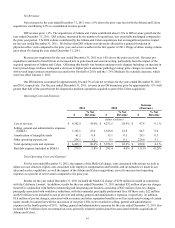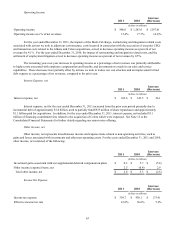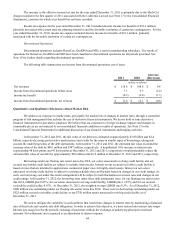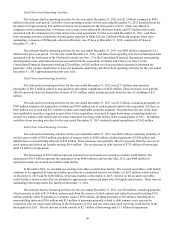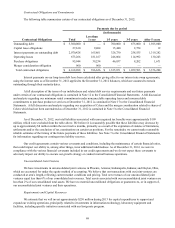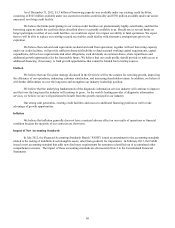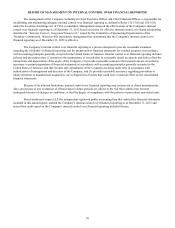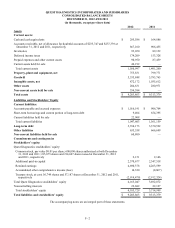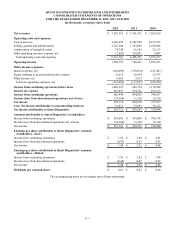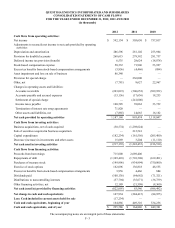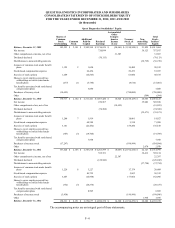Quest Diagnostics 2012 Annual Report Download - page 72
Download and view the complete annual report
Please find page 72 of the 2012 Quest Diagnostics annual report below. You can navigate through the pages in the report by either clicking on the pages listed below, or by using the keyword search tool below to find specific information within the annual report.69
As of December 31, 2012, $1.3 billion of borrowing capacity was available under our existing credit facilities,
consisting of $525 million available under our secured receivables credit facility and $750 million available under our senior
unsecured revolving credit facility.
We believe the banks participating in our various credit facilities are predominantly highly-rated banks, and that the
borrowing capacity under the credit facilities described above is currently available to us. Should one or several banks no
longer participate in either of our credit facilities, we would not expect it to impact our ability to fund operations. We expect
that we will be able to replace our existing secured receivables credit facility with alternative arrangements prior to its
expiration.
We believe that cash and cash equivalents on-hand and cash from operations, together with our borrowing capacity
under our credit facilities, will provide sufficient financial flexibility to fund seasonal working capital requirements, capital
expenditures, debt service requirements and other obligations, cash dividends on common shares, share repurchases and
additional growth opportunities for the foreseeable future. We believe that our credit profile should provide us with access to
additional financing, if necessary, to fund growth opportunities that cannot be funded from existing sources.
Outlook
We believe that our five-point strategy discussed in the Overview will be the catalyst for restoring growth, improving
the efficiency of our operations, enhancing customer satisfaction, and increasing shareholder returns. In addition, we believe it
will further differentiate us over the long-term and strengthen our industry leadership position.
We believe that the underlying fundamentals of the diagnostic information services industry will continue to improve
and that over the long-term the industry will continue to grow. As the world's leading provider of diagnostic information
services, we believe we are well positioned to benefit from the growth expected in our industry.
Our strong cash generation, existing credit facilities and access to additional financing position us well to take
advantage of growth opportunities.
Inflation
We believe that inflation generally does not have a material adverse effect on our results of operations or financial
condition because the majority of our contracts are short term.
Impact of New Accounting Standards
In July 2012, the Financial Accounting Standards Board (“FASB”) issued an amendment to the accounting standards
related to the testing of indefinite-lived intangible assets, other than goodwill, for impairment. In February 2013, the FASB
issued a new accounting standard that adds new disclosure requirements for amounts reclassified out of accumulated other
comprehensive income. The impact of these accounting standards are discussed in Note 2 to the Consolidated Financial
Statements.




